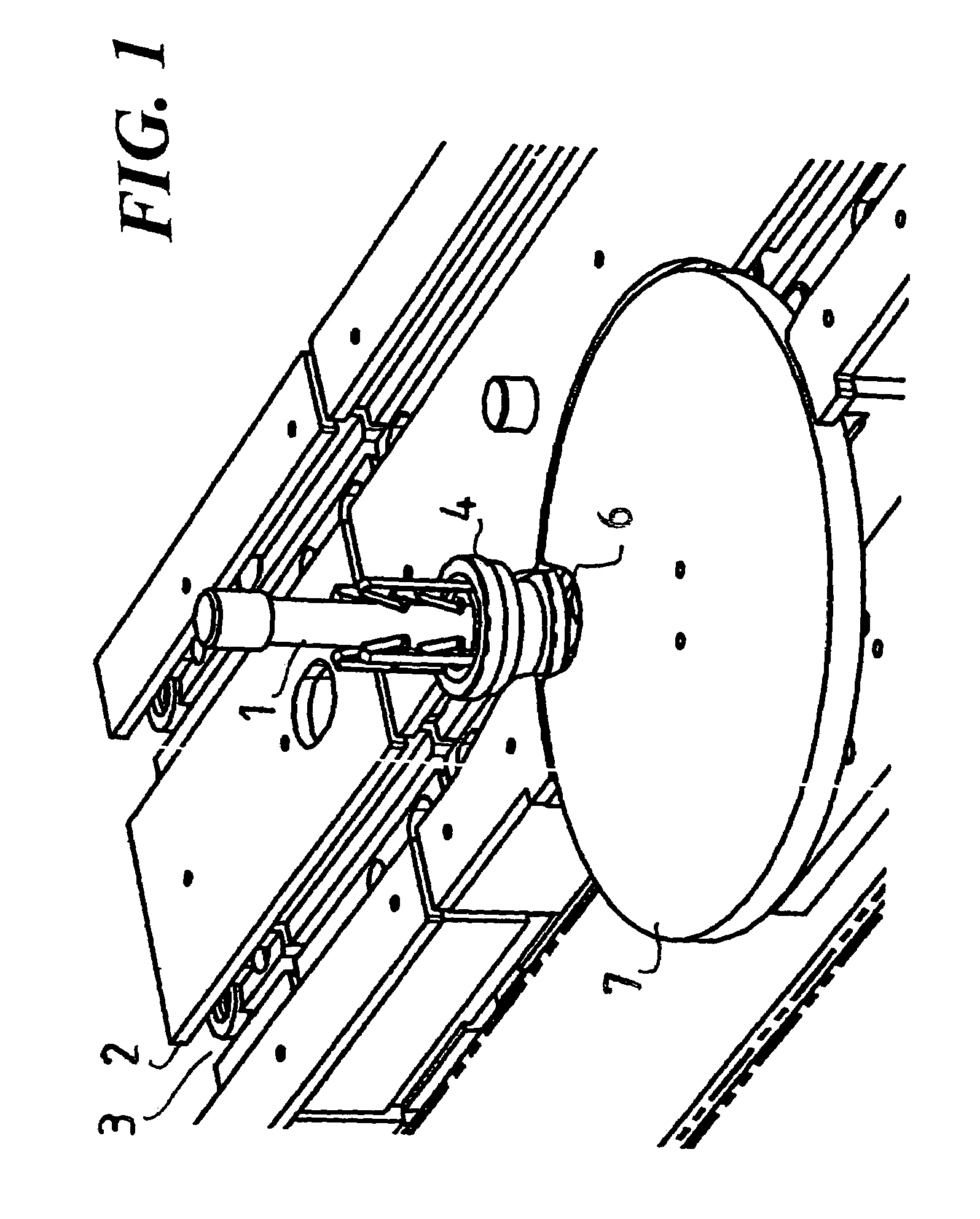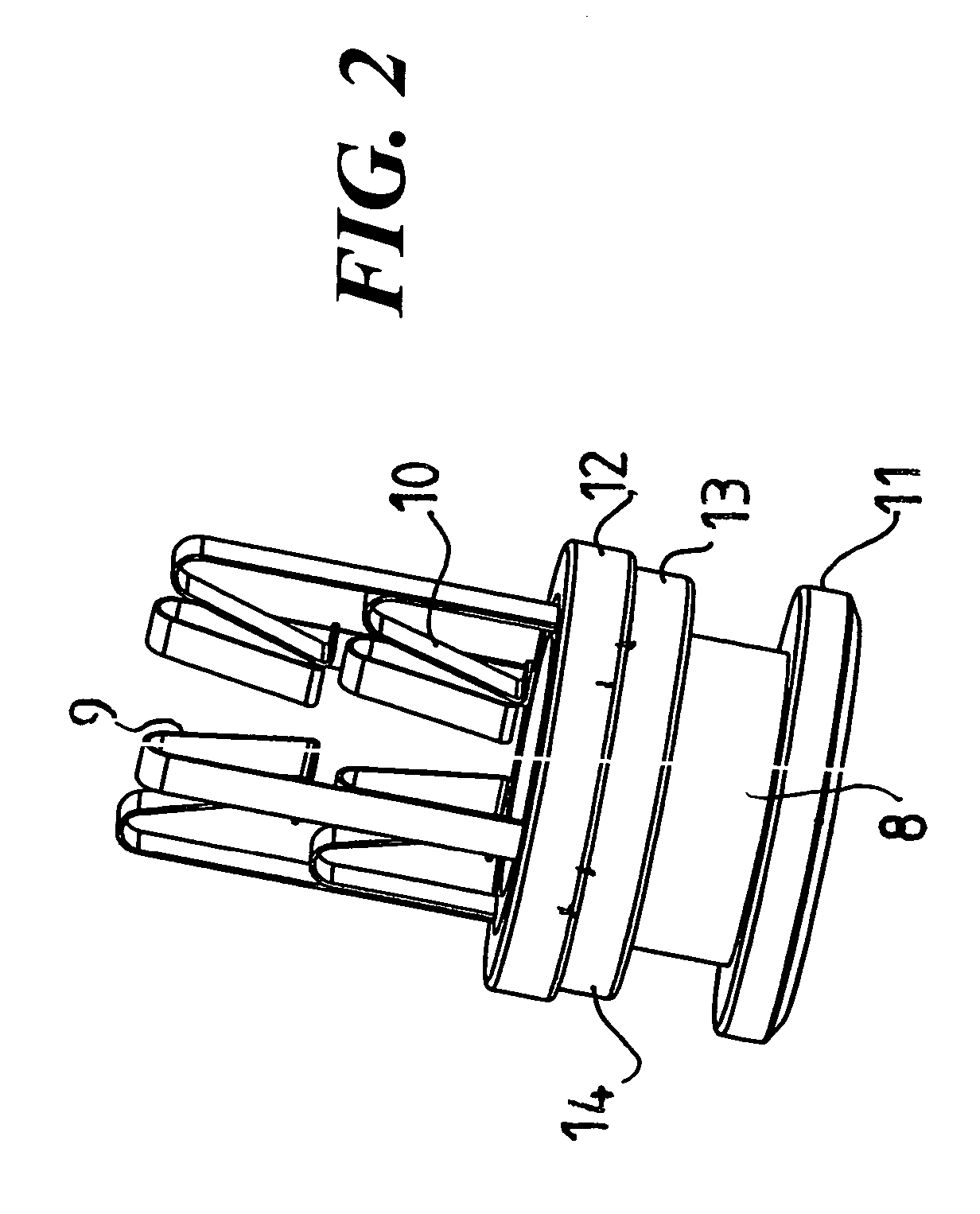Test tube carrier
- Summary
- Abstract
- Description
- Claims
- Application Information
AI Technical Summary
Benefits of technology
Problems solved by technology
Method used
Image
Examples
Embodiment Construction
[0019]Referring to FIG. 1, therein is shown a portion of a transport system suited for moving test tubes 1 placed on test tube carriers 4 between different handling stations. The transport system comprises a guide lane 3 forming a transport path for the test tube carriers 4 and having rails 2 at its sides for supporting the test tube carriers during their travel and preventing the same from tipping aside. At the bottom of the guide lane 3 are provided running belts 5 (not shown) on which the test tube carriers move supportedly. The guide lane 3 forming the transport path controls the transport route of a given test tube carrier 4. Operating along the path of the guide lane are adapted handling stations capable of performing analysis of a sample contained in a test tube, rearrangement of the sample sequence and other possible functions such as derouting to a crossing lane. In the transport system of FIG. 1, the handling station shown therein includes a turnstile disc 7 with a transfe...
PUM
 Login to View More
Login to View More Abstract
Description
Claims
Application Information
 Login to View More
Login to View More - R&D
- Intellectual Property
- Life Sciences
- Materials
- Tech Scout
- Unparalleled Data Quality
- Higher Quality Content
- 60% Fewer Hallucinations
Browse by: Latest US Patents, China's latest patents, Technical Efficacy Thesaurus, Application Domain, Technology Topic, Popular Technical Reports.
© 2025 PatSnap. All rights reserved.Legal|Privacy policy|Modern Slavery Act Transparency Statement|Sitemap|About US| Contact US: help@patsnap.com



